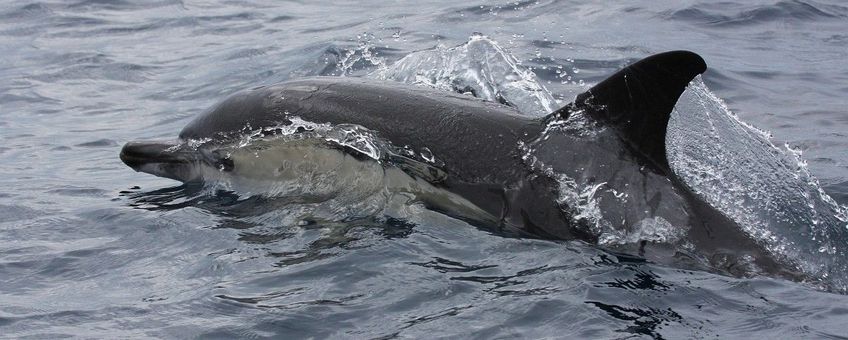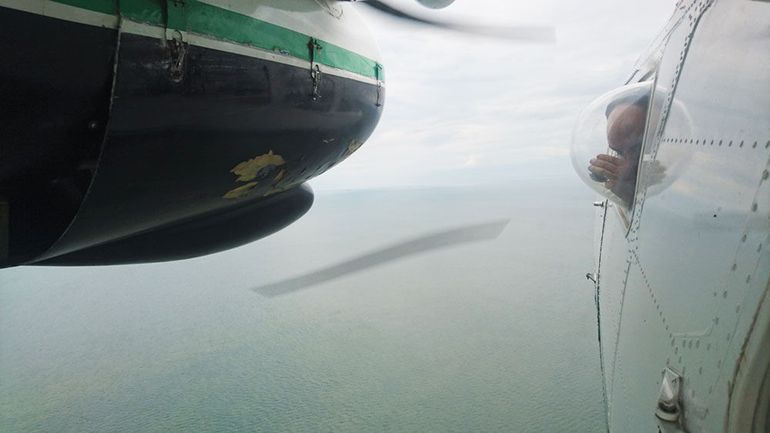
1.5 million whales, dolphins and porpoises in the European Atlantic
Wageningen Marine ResearchThe survey was carried out by nine collaborating European institutes for marine research, among which Wageningen Marine Research. Compared to the previous SCANS research from 2005, no major shifts have been found.
This survey is the third in a series that began in 1994 (SCANS) and continued in 2005 (SCANS-II). For harbour porpoise, white-beaked dolphin and minke whale in the North Sea, the series of abundance estimates shows no statistical support for a change, in other words, a stable trend in abundance over the 22 years covered by the surveys. For other species in the region, at least one more survey will be needed in the future before the conservation status can be assessed.
The most abundant species were harbour porpoise (467,000 animals), common dolphins (468,000) and striped dolphins (372,000), with a further 158,000 either common or striped dolphins. Numbers of other species of dolphins estimated to be present were 28,000 bottlenose dolphins, 36,000 white-beaked dolphins and 16,000 white-sided dolphins. Deep-diving whales that feed primarily on squid in offshore waters were estimated to be 26,000 pilot whales, 14,000 sperm whales and 11,000 beaked whales of several different species. Of the filter-feeding baleen whales, 15,000 minke whales and 18,000 fin whales were estimated to be present.
Results indicate that the shift seen in harbour porpoise distribution in the North Sea from the northwest in 1994 to the south in 2005 was maintained in 2016, with highest densities found in the southwestern North Sea, and north and east of Denmark.

The survey was a collaboration among scientists in nine countries bordering the Atlantic and was supported by the governments of those countries. It was coordinated by Professor Phil Hammond and Claire Lacey at the Sea Mammal Research Unit, University of St Andrews in Scotland, UK.
Three ships and seven aircraft surveyed an area of 1.8 million square kilometres from the strait of Gibraltar in the south to Vestfjorden, Norway in the north over 6 weeks in summer 2016. Teams of observers searched along 60,000 km of transect line, recording thousands of groups of cetaceans from 19 different species.
The data were collected using line transect sampling methods designed to allow correction for animals missed on the transect line, without which estimates of abundance would be negatively biased. This was achieved using two semi-independent teams of observers on the ships and using the 'circle-back' aerial survey method, in which the aircraft flies a loop to re-survey the same piece of transect.
T he new estimates of abundance will be integral to cetacean assessments undertaken for OSPAR’s Quality Status Report and for the EU Marine Strategy Framework Directive assessments of Good Environmental Status. The results also enable the impact of bycatch and other anthropogenic pressures on cetacean populations to be determined, fulfilling a suite of needs under the EU Habitats Directive and the UNEP Agreement on the Conservation of Small Cetaceans in the Baltic, North east Atlantic, Irish and North Seas (ASCOBANS).
he new estimates of abundance will be integral to cetacean assessments undertaken for OSPAR’s Quality Status Report and for the EU Marine Strategy Framework Directive assessments of Good Environmental Status. The results also enable the impact of bycatch and other anthropogenic pressures on cetacean populations to be determined, fulfilling a suite of needs under the EU Habitats Directive and the UNEP Agreement on the Conservation of Small Cetaceans in the Baltic, North east Atlantic, Irish and North Seas (ASCOBANS).
Dr Meike Scheidat (project leader of the aerial scans from Wageningen Marine Research) said: “The survey has been a huge success. We are grateful to all cruise leaders, observers, pilots, captains and vessel crews for their hard work and dedication during the long hours of fieldwork.”
She also remarked: “In our part of the area, the southern North Sea, the white-beaked dolphin, minke whale and porpoise are the more prominent inhabitants. For these species, we see a shift towards the south. Our part of the North Sea has become more important for these species. For good protection measures, monitoring is essential.”
The results of this survey have been published in a report (pdf; 1.3 MB).
Text: Wageningen University & Research
Photos: Bart Vastenhouw, Saxifraga (lead photo: common dolphin); Meike Scheidat; Sander Lagerveld
